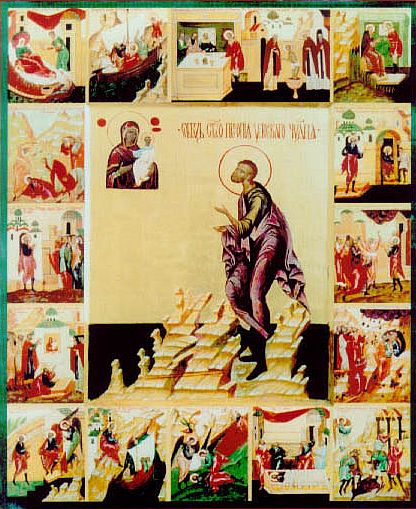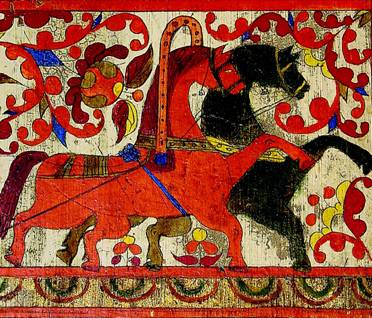|
Verkhnyaya Toyma, Arkhangelsk Oblast
Verkhnyaya Toyma (russian: Ве́рхняя То́йма) is a rural locality (a '' selo'') and the administrative center of Verkhnetoyemsky District, Arkhangelsk Oblast, Russia, located on the right bank of the Northern Dvina River. It also serves as the administrative center of Verkhnetoyemsky Selsoviet, one of the fourteen selsoviets into which the district is administratively divided. Municipally, it is the administrative center of Verkhnetoyemskoye Rural Settlement. Population: It is served by Verkhnyaya Toyma Airport. History Etymology The name of Verkhnyaya Toyma stems from the name of the Verkhnyaya Toyma River, which, in turn, means ''The Upper Toyma'', as compared with ''The Lower Toyma'', the Nizhnyaya Toyma River, also a right tributary of the Northern Dvina. The toponym ''Toyma'' is common to all northern Russian territories, from Toyma in Karelia to Toyma River in the Republic of Tatarstan. It relates to an extinct Uralic ethnonym of the same name known to ... [...More Info...] [...Related Items...] OR: [Wikipedia] [Google] [Baidu] |
Arkhangelsk Oblast
Arkhangelsk Oblast (russian: Арха́нгельская о́бласть, ''Arkhangelskaya oblast'') is a federal subject of Russia (an oblast). It includes the Arctic archipelagos of Franz Josef Land and Novaya Zemlya, as well as the Solovetsky Islands in the White Sea. Arkhangelsk Oblast also has administrative jurisdiction over the Nenets Autonomous Okrug (NAO). Including the NAO, Arkhangelsk Oblast has an area of 587,400 km2. Its population (including the NAO) was 1,227,626 as of the 2010 Census. The city of Arkhangelsk, with a population of 301,199 as of the 2021 Census, is the administrative center of the oblast.Charter, Article 5 The second largest city is the nearby Severodvinsk, home to Sevmash, a major shipyard for the Russian Navy. Among the oldest populated places of the oblast are Kholmogory, Kargopol, and Solvychegodsk; there are a number of Russian Orthodox monasteries, including the Antoniev Siysky Monastery and the World Heritage S ... [...More Info...] [...Related Items...] OR: [Wikipedia] [Google] [Baidu] |
Toyma River
The Toyma (russian: Тойма; tt-Cyrl, Туйма, ''Tuyma'') is a river in Udmurtia and Tatarstan, Russian Federation, a right-bank tributary of the Kama. It is long, of which are in Tatarstan, and its drainage basin covers .«Река ТОЙМА» Russian State Water Registry It begins in Udmurtia and falls to the Kama near Yelabuga, Tatarstan. Major tributaries are the Vozzhayka, Yurashka, Karinka rivers. The maximal mineralization 400-600 mg/L. The maximal water discharge was in 1979. Drainage is regulated. Average sediment accumulation at the mouth per year is . Since 1978 it is protected as a ''natural monument of Tatarstan''. |
Aleksandr Matveyev (linguist)
Aleksandr Konstantinovich Matveyev (russian: Александр Константинович Матвеев, July 8, 1926 – October 9, 2010) was a Russian linguist known for his works in toponymics (branch of linguistics studying toponyms), onomastics (studies of proper names), and etymology (origins and semantical development of words). Biography Aleksandr Matveyev was born in Sverdlovsk but because of World War II he entered and graduated from the Khabarovsk University. Starting in 1952 he worked at the Ural State University in Sverdlovsk. In 1970 he defended his second thesis (Russian degree of ''doctor nauk'') and became professor of the philological department. Since 1961 – chief of the chair of Russian language and general linguistics at the Ural State University. In 1988 he received the title of ''Scientist Emeritus of Russia''. In 1991 he was elected a corresponding member of the Russian Academy of Sciences. Being the chief of the annual dialectological and toponym ... [...More Info...] [...Related Items...] OR: [Wikipedia] [Google] [Baidu] |
Continuum (theory)
Continuum theories or models explain variation as involving gradual quantitative transitions without abrupt changes or discontinuities. In contrast, categorical theories or models explain variation using qualitatively different states. In physics In physics, for example, the space-time continuum model describes space and time as part of the same continuum rather than as separate entities. A spectrum in physics, such as the electromagnetic spectrum, is often termed as either continuous (with energy at all wavelengths) or discrete (energy at only certain wavelengths). In contrast, quantum mechanics uses quanta, certain defined amounts (i.e. categorical amounts) which are distinguished from continuous amounts. In mathematics and philosophy A good introduction to the philosophical issues involved is John Lane Bell'essayin th''Stanford Encyclopedia of Philosophy'' A significant divide is provided by the law of excluded middle. It determines the divide between intuitionis ... [...More Info...] [...Related Items...] OR: [Wikipedia] [Google] [Baidu] |
Linguist
Linguistics is the scientific study of human language. It is called a scientific study because it entails a comprehensive, systematic, objective, and precise analysis of all aspects of language, particularly its nature and structure. Linguistics is concerned with both the cognitive and social aspects of language. It is considered a scientific field as well as an academic discipline; it has been classified as a social science, natural science, cognitive science,Thagard, PaulCognitive Science, The Stanford Encyclopedia of Philosophy (Fall 2008 Edition), Edward N. Zalta (ed.). or part of the humanities. Traditional areas of linguistic analysis correspond to phenomena found in human linguistic systems, such as syntax (rules governing the structure of sentences); semantics (meaning); morphology (structure of words); phonetics (speech sounds and equivalent gestures in sign languages); phonology (the abstract sound system of a particular language); and pragmatics (how social ... [...More Info...] [...Related Items...] OR: [Wikipedia] [Google] [Baidu] |
Veliky Ustyug
Veliky Ustyug (russian: Вели́кий У́стюг) is a town in Vologda Oblast, Russia, located in the northeast of the oblast at the confluence of the Sukhona and Yug Rivers. As of the 2010 Census, its population was 31,665. Veliky Ustyug has a great historical significance and was one of the major cities of the Russian North. It preserved some of the past urban structure and many of the architectural monuments. It has lost its former leading role and is nowadays mostly known for tourism. Location and etymology Veliky Ustyug is close to the confluence of the Sukhona (flowing from the west) and the Yug (from the south) rivers. Downstream from this confluence the rivers form a single waterway known as the Northern Dvina, sometimes referred to as the Little Northern Dvina. The historical center of the town is on the left (high) bank of the Sukhona and, in contrast to many historical Russian towns, there is an embankment along the Sukhona. Dymkovskaya Sloboda and Tr ... [...More Info...] [...Related Items...] OR: [Wikipedia] [Google] [Baidu] |
Karelians
Karelians ( krl, karjalaižet, karjalazet, karjalaiset, Finnish: , sv, kareler, karelare, russian: Карелы) are a Finnic ethnic group who are indigenous to the historical region of Karelia, which is today split between Finland and Russia. Karelians living in Russian Karelia are considered a distinct ethnic group closely related to Finnish Karelians, who are considered a subset of Finns. This distinction historically arose from Karelia having been fought over and eventually split between Sweden and Novgorod, resulting in Karelians being under different cultural spheres. In Russia, Karelians mostly live in the Republic of Karelia, where they are the designated ethnic group, and in other adjacent north-western parts of the country. They traditionally speak the Karelian language and are Eastern Orthodox Christians. There are also significant Karelian enclaves in the Tver and Novgorod oblasts, as some Karelians migrated to those areas after the Russo-Swedish War of 1656-1 ... [...More Info...] [...Related Items...] OR: [Wikipedia] [Google] [Baidu] |
Pagan
Paganism (from classical Latin ''pāgānus'' "rural", "rustic", later "civilian") is a term first used in the fourth century by early Christians for people in the Roman Empire who practiced polytheism, or ethnic religions other than Judaism. In the time of the Roman empire, individuals fell into the pagan class either because they were increasingly rural and provincial relative to the Christian population, or because they were not ''Miles Christianus, milites Christi'' (soldiers of Christ).J. J. O'Donnell (1977)''Paganus'': Evolution and Use ''Classical Folia'', 31: 163–69. Alternative terms used in Christian texts were ''Greeks, hellene'', ''gentile'', and ''wikt:heathen, heathen''. Ritual sacrifice was an integral part of ancient Classical mythology, Graeco-Roman religion and was regarded as an indication of whether a person was pagan or Christian. Paganism has broadly connoted the "Civil religion, religion of the peasantry". During and after the Middle Ages, the term ''paga ... [...More Info...] [...Related Items...] OR: [Wikipedia] [Google] [Baidu] |
Tale Of The Death Of The Russian Land
{{disambiguation, geo ...
Tale may refer to: * Narrative, or story, a report of real or imaginary connected events * TAL effector (TALE), a type of DNA binding protein * Tale, Albania, a resort town * Tale, Iran, a village * Tale, Maharashtra, a village in Ratnagiri district, Maharashtra state, India * River Tale, a small river in the English county of Devon * ''The Tale'', 2018 American drama film See also * Tale-e Rudbar, a village in Iran * Taleh, a town in Somalia * Tales (other) Tales may refer to: Arts and entertainment * ''Tales'' (album), a 1995 album by Marcus Miller * ''Tales'' (film), a 2014 Iranian film * ''Tales'' (TV series), an American television series * ''Tales'' (video game), a 2016 point-and-click adventure ... [...More Info...] [...Related Items...] OR: [Wikipedia] [Google] [Baidu] |
Verkhnetoyemsky Selsoviet
Verkhnetoyemsky District (russian: Верхнето́емский райо́н) is an administrative district ( raion), one of the twenty-one in Arkhangelsk Oblast, Russia.Law #65-5-OZ Municipally, it is incorporated as Verkhnetoyemsky Municipal District.Law #258-vneoch.-OZ It is located in the southeast of the oblast and borders with Pinezhsky District in the north, Udorsky District of the Komi Republic in the east, Krasnoborsky and Ustyansky Districts in the south, Shenkursky District in the west, and with Vinogradovsky District in the northwest. Its administrative center is the rural locality (a '' selo'') of Verkhnyaya Toyma. District's population: The population of Verkhnyaya Toyma accounts for 20.3% of the district's total population. History The area was populated by speakers of Uralic languages and then colonized by the Novgorod Republic. After the fall of Novgorod, the area became a part of the Grand Duchy of Moscow. Toyma was first mentioned in the chronicles ... [...More Info...] [...Related Items...] OR: [Wikipedia] [Google] [Baidu] |
Janet Martin
Janet Martin was an American film actress and singer. She appeared in a number of Republic Pictures' films during the 1940s. Early years Martin was born Valya Valentina Tetiacov Terry, the daughter of Alexandria Myra Tetiacov Terry (also known as Myra Skolskaya). Her mother "was a well-known opera singer in Czarist Russia." (Another source gives Martin's original name as both Valya Sokolskaya and Valya Sobolskaya.) She said that she changed her name to avoid political arguments related to Russian political policies. In 1947, Martin began studying journalism at the University of Southern California, believing that knowing about writing would make her a better actress. Film Martin went to Hollywood to gain acting experience in Little Theater productions. When she was 14, she signed a seven-year contract with Republic Pictures. Selected filmography * ''Call of the South Seas'' (1944) * '' Hands Across the Border'' (1944) * '' Lake Placid Serenade'' (1944) * '' The Yellow Rose o ... [...More Info...] [...Related Items...] OR: [Wikipedia] [Google] [Baidu] |
Novgorod Republic
The Novgorod Republic was a medieval state that existed from the 12th to 15th centuries, stretching from the Gulf of Finland in the west to the northern Ural Mountains in the east, including the city of Novgorod and the Lake Ladoga regions of modern Russia. The Republic prospered as the easternmost trading post of the Hanseatic League and its Slavic, Baltic and Finnic people were much influenced by the culture of the Viking-Varangians and Byzantine people. Name The state was called "Novgorod" and "Novgorod the Great" (''Veliky Novgorod'', russian: Великий Новгород) with the form "Sovereign Lord Novgorod the Great" (''Gosudar Gospodin Veliky Novgorod'', russian: Государь Господин Великий Новгород) becoming common in the 15th century. ''Novgorod Land'' and ''Novgorod volost usually referred to the land belonging to Novgorod. ''Novgorod Republic'' itself is a much later term, although the polity was described as a republic as earl ... [...More Info...] [...Related Items...] OR: [Wikipedia] [Google] [Baidu] |


_b_016.jpg)
